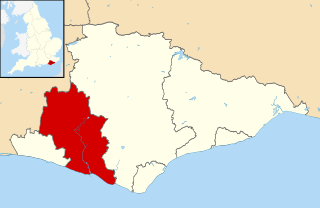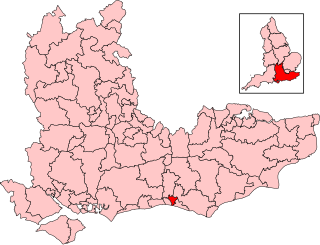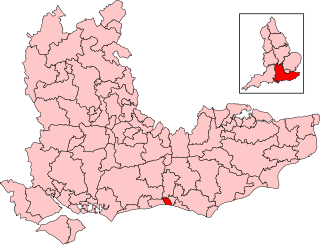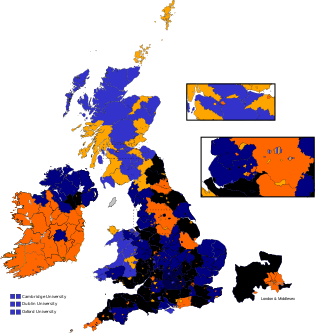
Sussex is an area within South East England that was historically a kingdom and, later, a county. It includes the ceremonial counties of East Sussex and West Sussex.

East Sussex is a ceremonial county in South East England. It is bordered by Kent to the northeast, West Sussex to the west, Surrey to the northwest, and the English Channel to the south. The largest settlement is the city of Brighton and Hove, and the county town is Lewes.

Lewes is a local government district in East Sussex, England. The district is named after the town of Lewes. The largest town is Seaford. The district also includes the towns of Newhaven, Peacehaven and Telscombe and numerous villages and surrounding rural areas. The council meets in Lewes and has its main offices in Newhaven.

Polegate is a town and civil parish in the Wealden District of East Sussex, England, United Kingdom. It is located five miles (8 km) north of the seaside resort of Eastbourne and is part of the greater area of that town. Although once a railway settlement, its rail links were closed as part of the Beeching cuts. The 2011 census put the civil parish of Polegate at a population of 8,586, with 41.2% aged 65 and over.

Brighton Pavilion is a constituency represented in the House of Commons of the UK Parliament since 2024 by Siân Berry of the Green Party.

Lewes is a constituency in East Sussex represented in the House of Commons of the UK Parliament since 2024 by James MacCleary, a Liberal Democrat.

Brighton Kemptown and Peacehaven is a constituency represented in the House of Commons of the UK Parliament since the 2024 general election by Chris Ward of the Labour Party.

Hove and Portslade is a borough constituency in East Sussex represented in the House of Commons of the UK Parliament since 2015 by Peter Kyle of the Labour Party, who currently serves as Secretary of State for Science, Innovation and Technology in the government of Keir Starmer.

East Sussex was a parliamentary constituency in the county of Sussex, which returned two Members of Parliament to the House of Commons of the Parliament of the United Kingdom, elected by the bloc vote system.

East Sussex County Council is the upper tier local authority for the non-metropolitan county of East Sussex in England. The non-metropolitan county is smaller than the ceremonial county; the latter additionally includes Brighton and Hove.

Bristol was a European Parliament constituency centred on Bristol in England, but covering much of Avon. Until 1984, it included parts of southern Gloucestershire and northwestern Wiltshire.

Prior to its uniform adoption of proportional representation in 1999, the United Kingdom used first-past-the-post for the European elections in England, Scotland and Wales. The European Parliament constituencies used under that system were smaller than the later regional constituencies and only had one Member of the European Parliament each.

Prior to its uniform adoption of proportional representation in 1999, the United Kingdom used first-past-the-post for the European elections in England, Scotland and Wales. The European Parliament constituencies used under that system were smaller than the later regional constituencies and only had one Member of the European Parliament each.

Prior to its uniform adoption of proportional representation in 1999, the United Kingdom used first-past-the-post for the European elections in England, Scotland and Wales. The European Parliament constituencies used under that system were smaller than the later regional constituencies and only had one Member of the European Parliament each. The constituency of Sussex West was one of them.

Prior to its uniform adoption of proportional representation in 1999, the United Kingdom used first-past-the-post for the European elections in England, Scotland and Wales. The European Parliament constituencies used under that system were smaller than the later regional constituencies and only had one Member of the European Parliament each.

Prior to its uniform adoption of proportional representation in 1999, the United Kingdom used first-past-the-post for the European elections in England, Scotland and Wales. The European Parliament constituencies used under that system were smaller than the later regional constituencies and only had one Member of the European Parliament each.
The history of local government in Sussex is unique and complex. Founded as a kingdom in the 5th century, Sussex was annexed by the kingdom of Wessex in the 9th century, which after further developments became the Kingdom of England. It currently corresponds to two counties, East Sussex and West Sussex.
















